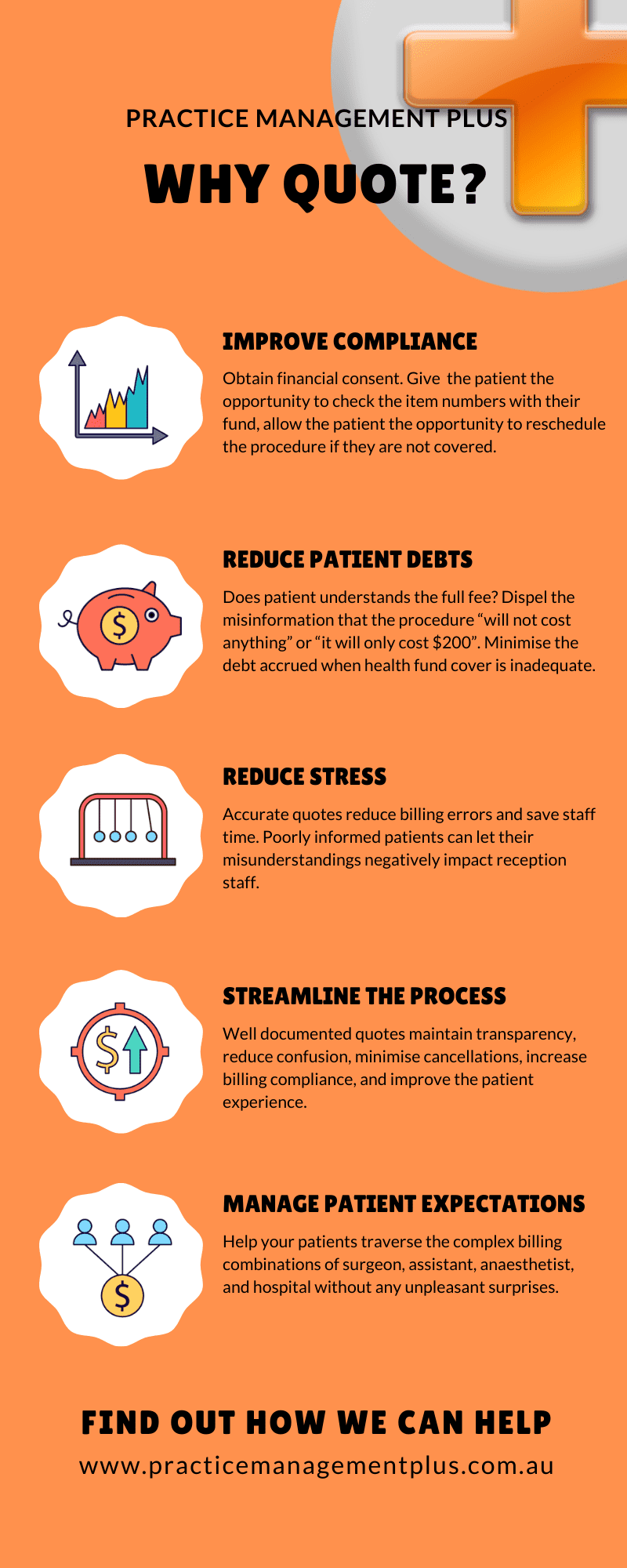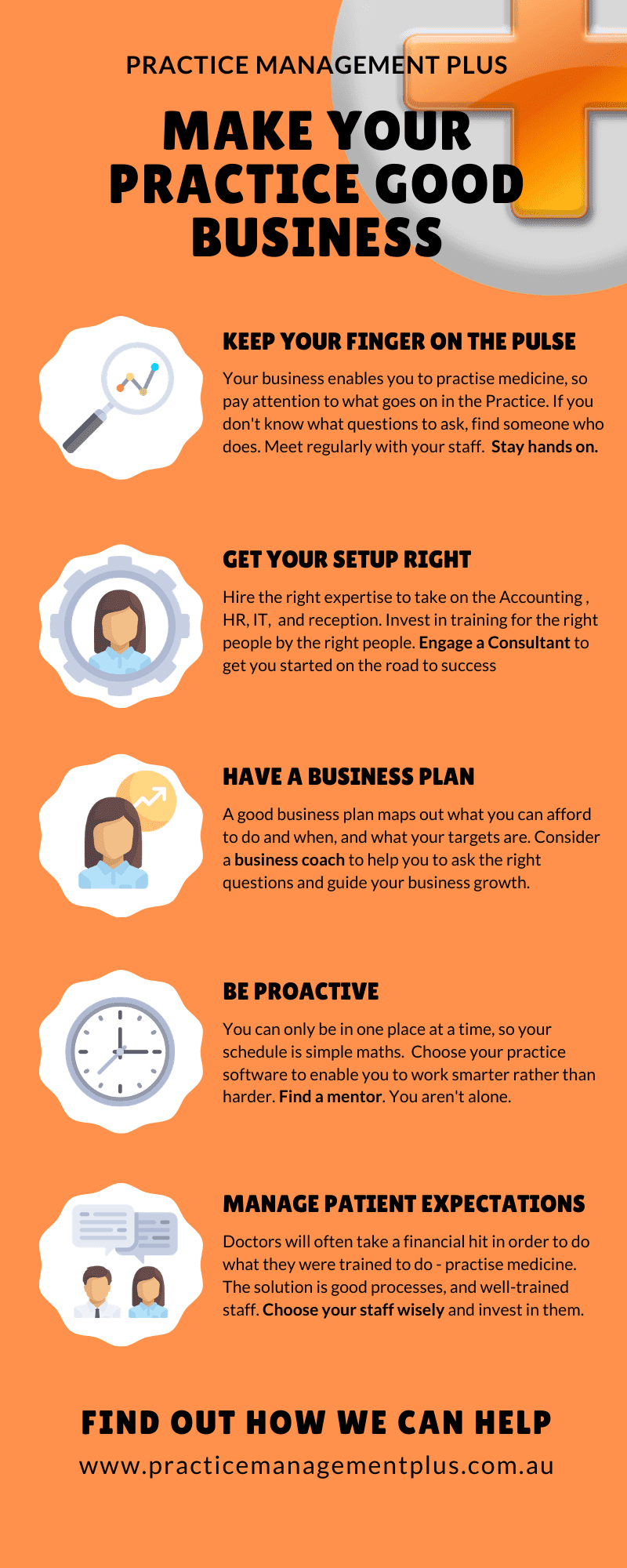Updated 5th November 2023
The answer is simple; improve compliance, reduce outstanding accounts, and reduce the stress on your staff when claims are rejected by the Health Fund.
The changes to government tier structure for health fund are a timely opportunity for specialist medical practices to review their informed financial consent and quoting processes.
Do you provide an estimate of fees for every procedure you perform?
What is your debt recovery process if you perform the procedure only to discover that the patient’s level of cover does not cover the items used in the procedure?
What is your debt recovery process if your staff quote incorrectly and the health fund pays nothing.
Did you know that the “basic”, “smart saver” options of some funds only pay up to the MBS fee? See the notes on the last page of the downloadable AHSA Participating Funds list https://www.ahsa.com.au/web/fundlist
Generating a quote or estimate of fees from your software:
- provides you with a copy of the information given to the patient prior to the surgery,
- provides the patient the opportunity to check with their fund for the anticipated item numbers,
- provides the patient the opportunity to reschedule the procedure if they are not covered,
- provides the practice with the opportunity to request a signed acknowledgement of responsibility for the FULL fee in the event that they are not covered,
- helps dispel the misinformation often provided to patients that the procedure “will not cost anything” or “it will only cost $200”
- reduces the debt accrued when health fund cover is inadequate
- streamlines the process with clear, transparent information
- ensures compliance with the expectations around informed financial consent (https://ama.com.au/article/ama-informed-financial-consent)
At Practice Management Plus, we thrive on streamlining your workflow processes to improve compliance, profit, and workplace satisfaction in Australian Medical Specialist Practices.
Contact Fiona to discuss how we can help your practice.
Click here to view the Quote and Surgical Billing Decision Tool. Download a copy of the file from the link.







